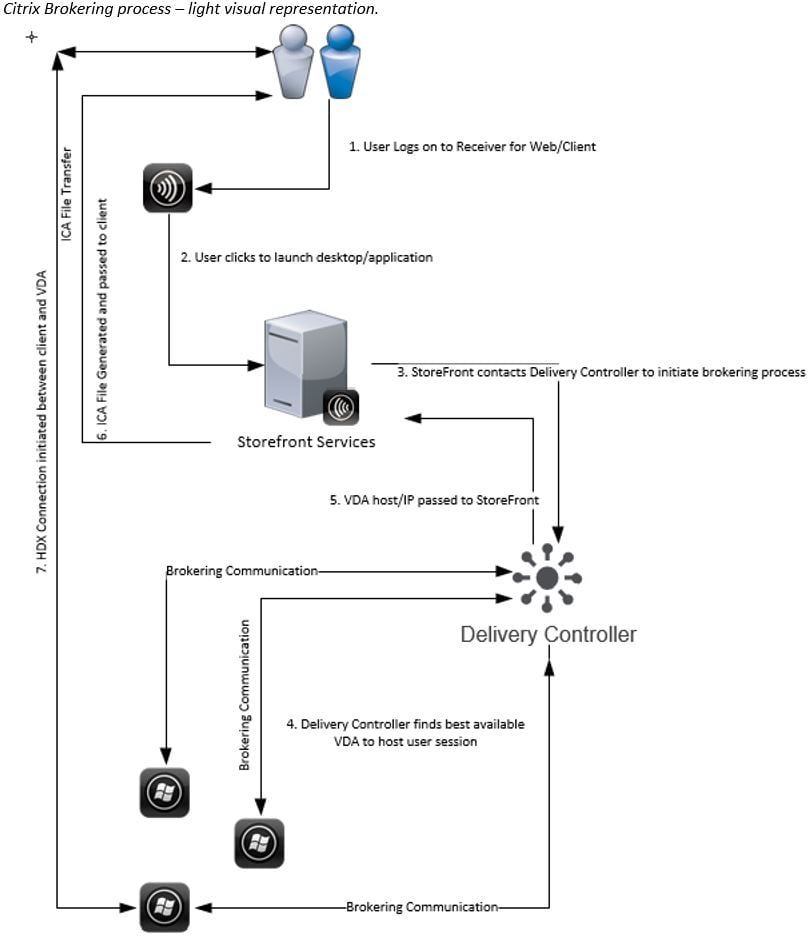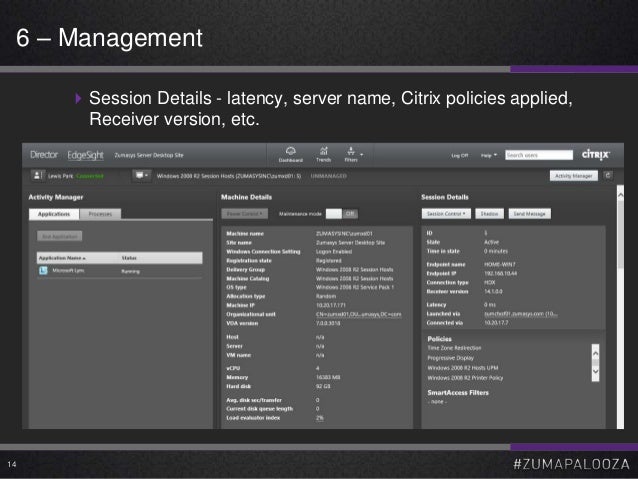Update 2015-04-28: Citrix provides the limited release hotfix ICATS760WX64009 that fixes this issue. More information below. During the research for my session about the XenApp 7.6 logon process, to be presented at Citrix Synergy and BriForum London, I noticed that the logon to my XenApp 7.6 lab server was taking a bit long. When ‘Citrix is slow’ means in-session performance issues, these issues are caused by network issues, server resource issues, or end-user behavior. We receiving slow citrix performance, installed citrix receiver and all of them from Win7 laptops, but much faster when using desktop machine, and it happens mostly during work time, checked both configuration laptop and desktop same, any expectation? Sometimes we are noticing that users, especially one, are experiencing extremely slow performance when using App1 over Citrix. The problem is extremely intermittent unfortunately, and difficult to tie down to any specifics. I would, however, like to rule out Citrix as the cause of the problem.
Citrix Receiver Is Slow


“Citrix is slow” is one of the most common complaints Citrix admins hear daily. Whether it is specific to slow logon times or poor session performance, Citrix admins often spend more than half of their day trying to find the root cause of these complaints and quickly remediate – even when Citrix itself isn’t the root cause of the issue.

Slow printing across the network Like most Citrix features, printing has its own virtual channel in the independent computing architecture (ICA)/ high definition experience (HDX) protocol stack.
The complexity of finding root cause isn’t within Citrix itself, but rather the supporting IT elements that surround the Citrix farm and the lack of visibility that most IT professionals have into that environment. Free tools, like Citrix Director, do not provide visibility into early stages of the logon, app availability, backend systems (Active Directory, Profile Servers, Licensing Servers), virtual servers, user devices, printers, or storage. And if you are in healthcare, the complexity only increases when you add in your EHR systems (Cerner, Epic, MEDITECH, Allscripts) and do not have the data to identify if the root cause of poor performance is with the EHR system or the infrastructure supporting it.
In order to make troubleshooting “Citrix is Slow” easy, IT professionals need purpose-built tools that leverage embedded intelligence and automation to anticipate, troubleshoot, and prevent end-user experience issues regardless of where IT workloads or users are located.
Citrix Receiver Downloads
Troubleshooting Requires Visibility
Citrix Receiver Slow Typing
Goliath provides complete end-to-end visibility into the underlying virtualization delivery infrastructure, including specific details on the end user – all from a central console. This enables IT administrators to quickly pinpoint true root cause for troubleshooting and reach resolution from an integrated view of the entire virtualization delivery infrastructure – not just one element of it. As depicted in Figure 1 below, Goliath provides broad metrics across the 15+ systems that work together in concert to deliver the user experience.
